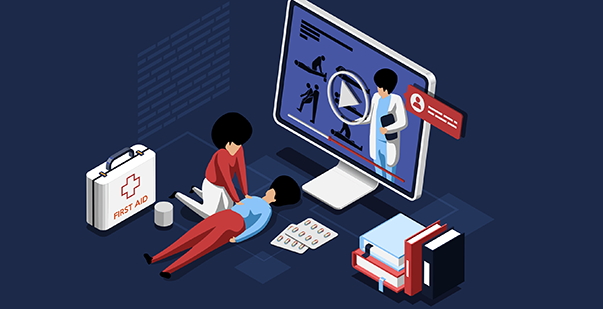
Last Updated On: September 23, 2024
CPR stands for cardiopulmonary resuscitation. It is a life-saving skill that can help someone who is not breathing or has no heartbeat. CPR can be learned online or in person, but which one is better? In this blog post, we will compare online and in-person CPR courses and help you decide which one is best for your needs.
If online education is your preference then American CPR Care Association is the most trustworthy source of knowledge and learning in the case of CPR and other life support certifications. To get your CPR online certification, all you have to do is:
– Pass the test
– Print your certification
In the next section, you’ll read about the benefits of pursuing the CPR online certification from us. We’ll also analyze both sides of the coin – online vs. offline training – in the subsequent sections.
One of the benefits of doing online CPR certification from the American CPR Care Association is that you can learn at your own pace and convenience. You don’t have to travel to a classroom or follow a fixed schedule.
Along with this, you can access the course materials anytime and anywhere. You just need to have an uninterrupted internet connection. You can also review the lessons as many times as you need until you feel confident.
Another benefit of doing online CPR certification from the American CPR Care Association is that you can save money and time. Online CPR courses are usually cheaper than in-person courses. They don’t require instructors, equipment, or facilities. You also don’t have to pay for transportation, parking, or childcare costs.
Lastly, online CPR courses can be completed in a few hours. This will save a lot of time. You won’t be required to take a day off from work or require someone to watch your kids. On the other hand, in-person courses can take a whole day or more.
Online CPR classes have many advantages, but they also have some drawbacks. Here are some of the pros and cons of online CPR courses:
Pros:
– Flexible and convenient
– Affordable and fast
– Self-paced and interactive
– Accredited and nationally recognized
Cons:
– No hands-on practice
– No feedback from instructors
– No interaction with other students
– No certification card on the spot
Online and in-person CPR training have some differences and similarities. Here are some of them:
Differences:
Similarities:
The best CPR course for your needs depends on several factors, such as your learning style, your budget, your availability, your purpose, and your preference. The good news is that the American CPR Care Association answers all your doubts. Here are some questions to ask yourself before choosing a CPR course:
Online and in-person CPR courses have their pros and cons. They also have some differences and similarities. The best way to choose a CPR course is to consider your needs and preferences. Whether you choose online or in-person CPR training, the most important thing is to learn how to save a life.

